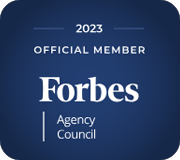It's easy to fall into the trap of chasing higher traffic numbers. Seeing a spike in website visits feels like progress, but here's the harsh truth: traffic alone doesn't pay the bills. Thousands of visitors who don't convert into paying customers are just a vanity metric in disguise. Businesses that prioritize clicks over cash often end up wasting time, money, and resources on strategies that look good in reports but fail to drive meaningful growth.
If your goal is to scale, it's time to reframe how you measure success. The real winners are the businesses that focus on revenue-focused metrics, not vanity traffic numbers.
The Traffic Fallacy
Many marketing agencies and businesses mistakenly equate increased traffic with success. But without conversion-focused strategies in place, more visitors don't necessarily mean more sales. In fact, a study by HubSpot revealed that only 1-2% of website traffic converts into leads, and even fewer become customers.
This is the traffic fallacy: assuming that more visitors automatically equate to more revenue. It's like throwing a party and focusing only on the guest count, ignoring whether anyone enjoyed themselves or connected with you.
Here's an example. Imagine your website gets 10,000 monthly visitors but only generates 50 leads and 5 sales. Now compare that to another site with just 2,000 visitors but 200 leads and 50 sales. Which business is thriving? The latter, because it's optimizing for quality over quantity.
Why Traffic Alone Won't Build a Profitable Business
- Low Intent Visitors Don't Convert
Most traffic is passive. People browse, read, and leave without taking meaningful action. High-intent visitors—those actively searching for a solution to their problem—are far more valuable than a crowd of aimless users. - High Bounce Rates Tell a Different Story
If your site isn't designed to guide visitors through a clear funnel, you'll see high bounce rates regardless of traffic volume. This indicates that users are leaving your site without engaging, costing you potential leads and revenue. - Ad Spend Without ROI Is a Waste
Many businesses burn money driving traffic through PPC campaigns but fail to generate a return on that investment. Without a focus on conversions and lead quality, ad spend becomes an expensive experiment. - Revenue, Not Traffic, Is the End Goal
Metrics like traffic can't exist in a vacuum. A business's success hinges on sales, profitability, and customer lifetime value (CLV). If traffic doesn't directly or indirectly support these outcomes, it's irrelevant.
Metrics That Matter More Than Traffic
If traffic is the wrong focal point, what should businesses prioritize? The answer lies in revenue-focused metrics that track how effectively your marketing efforts generate leads and convert them into paying customers.
- Conversion Rate
Your conversion rate measures how effectively your website or landing pages turn visitors into leads or customers. This is one of the most critical indicators of whether your marketing strategy is aligned with your audience's needs.
Example: A 3% conversion rate on 1,000 visitors is far better than a 0.5% conversion rate on 10,000 visitors. - Lead Quality
Not all leads are created equal. Are your campaigns attracting decision-makers and high-intent prospects, or are you collecting low-quality leads who never make it through the sales funnel? Lead scoring systems can help identify and prioritize prospects who are most likely to convert. - Cost Per Acquisition (CPA)
CPA tells you how much it costs to acquire a new customer. By optimizing your campaigns to lower CPA while maintaining or increasing conversion rates, you're ensuring every dollar spent contributes to your bottom line. - Return on Ad Spend (ROAS)
ROAS measures the revenue generated for every dollar spent on advertising. A campaign with a $5,000 budget that generates $25,000 in sales has a 5:1 ROAS, making it a highly efficient revenue driver. - Customer Lifetime Value (CLV)
CLV measures the total revenue a customer generates over their relationship with your business. Focusing on attracting high-value customers who make repeat purchases or invest in upsells can significantly boost long-term profitability. - Revenue Per Visitor (RPV)
RPV calculates how much revenue each visitor contributes to your business. By improving your site's ability to upsell, cross-sell, or convert, you can increase RPV without necessarily driving more traffic.
How to Shift Your Focus from Traffic to Revenue
- Audit Your Marketing Strategy
Evaluate whether your current campaigns and content are designed to attract traffic or convert visitors into customers. If it's the former, it's time to realign your efforts. - Create a Seamless Sales Funnel
A strong funnel ensures that traffic doesn't go to waste. This means having clear CTAs, optimized landing pages, and follow-up processes in place to guide visitors through the buying journey. - Refine Your Targeting
Tools like Google Ads' audience segmentation and Facebook Ads' lookalike audiences make it easier than ever to target high-intent users. Don't waste your budget attracting visitors who aren't a good fit for your product or service. - Invest in CRO (Conversion Rate Optimization)
CRO focuses on making your website and landing pages as effective as possible at turning visitors into leads and customers. Testing headlines, imagery, CTAs, and even form lengths can lead to incremental improvements that significantly impact revenue. - Track and Adjust
Continuously monitor revenue-focused KPIs, like ROAS and CLV, to ensure your strategy is delivering results. Use analytics tools to identify gaps and optimize underperforming areas of your campaigns.
The Real Value of Marketing
Marketing's purpose isn't to drive traffic—it's to drive growth. While traffic is a piece of the puzzle, it should never be the end goal. Businesses that prioritize quality over quantity, focusing on conversions, lead quality, and revenue, will build more sustainable and profitable models than those chasing clicks.
If your marketing reports emphasize traffic over tangible results, it's time to rethink your approach. A small, steady stream of high-intent visitors converting into loyal customers is far more valuable than a flood of uninterested browsers.
Remember, success isn't measured by how many people know about your business—it's measured by how many of them buy from you, return, and refer others. When your marketing strategy focuses on metrics that matter, growth becomes a predictable outcome, not a guessing game.
It's time to stop obsessing over traffic and start obsessing over results. That's where the real wins happen.
How useful was this post?
Click on a star to rate it!
Average rating 5 / 5. Vote count: 1
No votes so far! Be the first to rate this post.
















